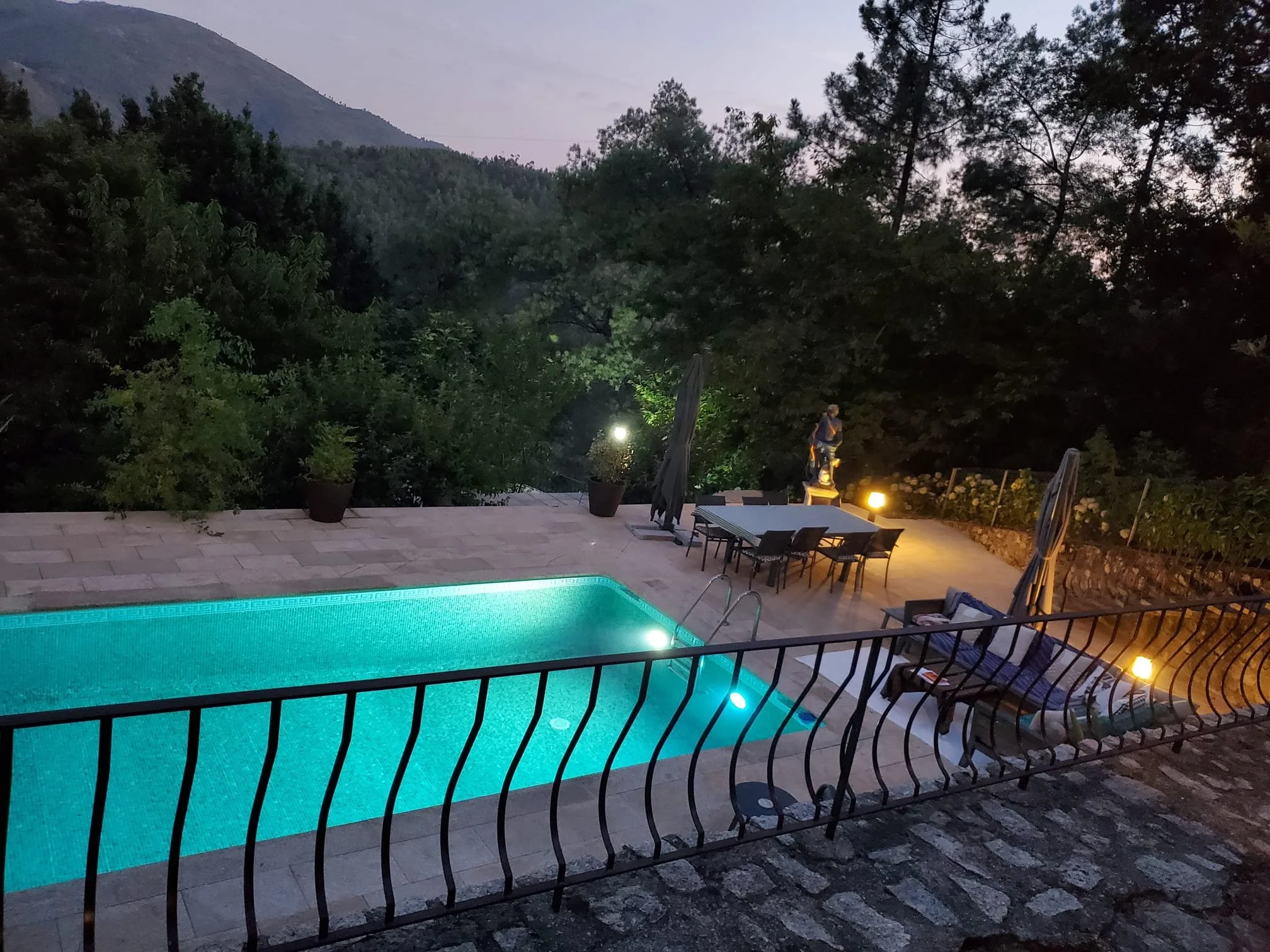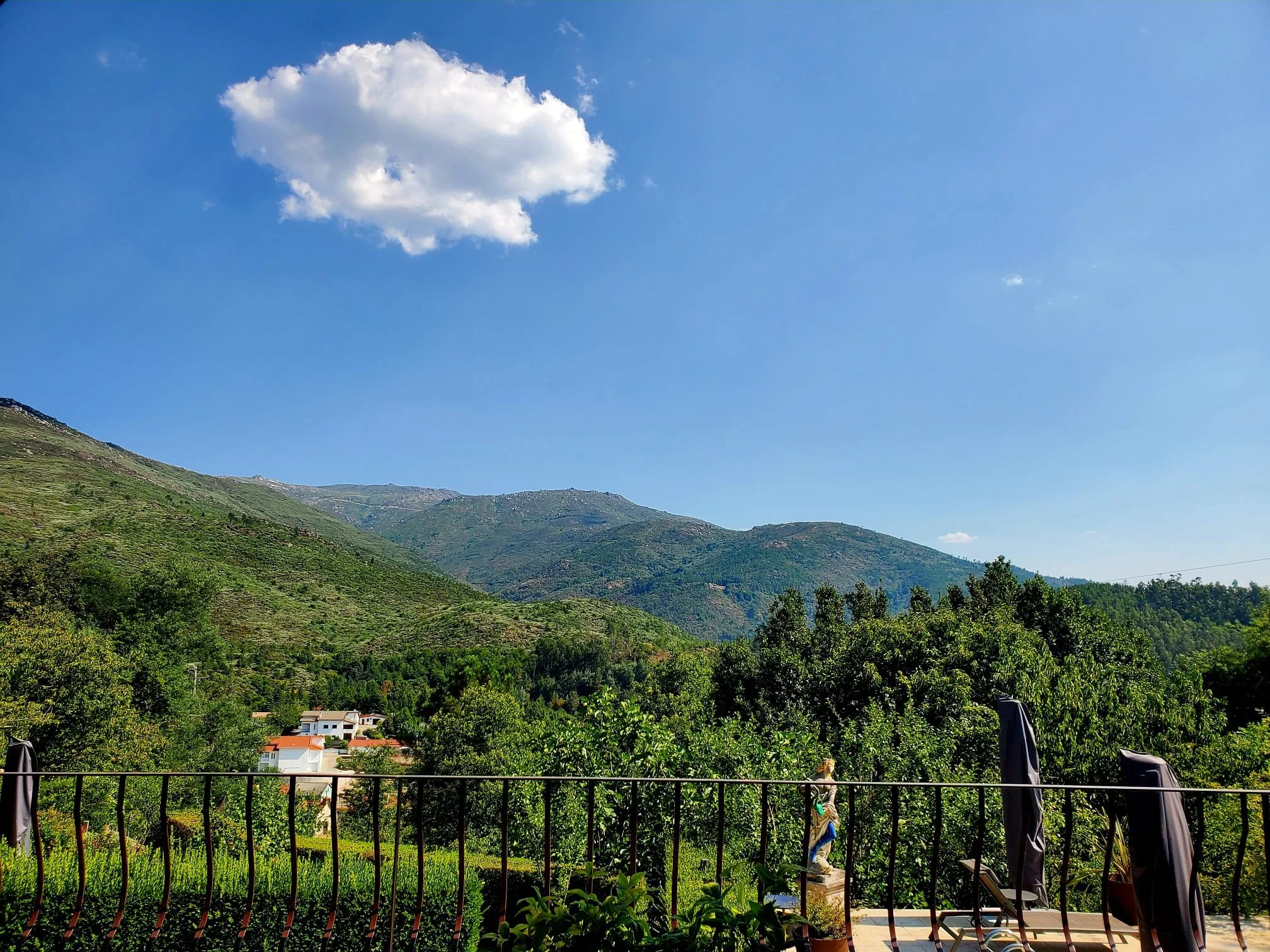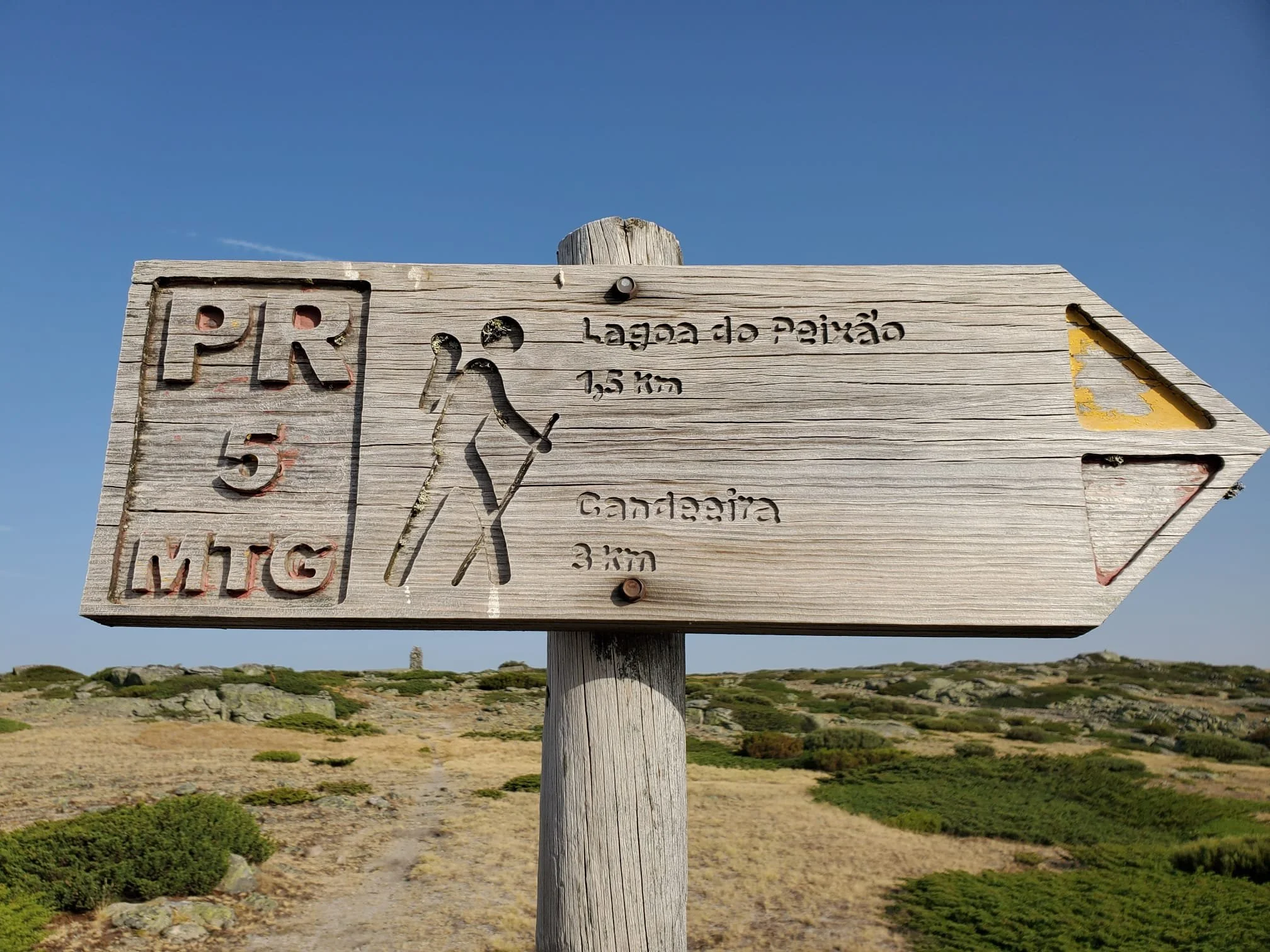Click here to read the previous post, Adjusting to Life in Spain: 16 Things I Learned From Living in Spain
Every year in August*, Madrid empties out. Madrileños leave the city for cooler, more relaxing climes, while newbies to the city stay and wonder where everyone went. That was me last year. This year, my second August in Spain, I decided to model myself after the popular (if paraphrased) adage: When in Spain, do as the Spaniards do.
So I took a few vacations.
Let’s start with Portugal.
*Yes, I realize it’s October (almost November, for crikey’s sake!), but the enjoyment of life prevented me from writing about said enjoyment of life for a couple months. Enjoy!
Getting to Portugal
First, you should know that I did not visit big cities like Lisbon, Porto or Braga. My experience was hanging with the locals in a small town.
So, I was off to visit my friend M in Seia, Portugal. We had devised the following travel schedule.
From Madrid to Salamanca by Train
I took the train from Príncipe Pío which is a fairly small station in Madrid, despite that it serves a few metro lines, city buses, long-distance buses and Cercanías commuter trains. (I realize this photo doesn’t make it look that small, but believe me, compared to Atocha, it’s a shed.)
Built by French architects in 1879, Príncipe Pío is an example of late 19th-century modernist architecture. It was known as the Estación del Norte (North Station) because it was constructed by the French-owned Compañía de los Caminos de Hierro del Norte de España (sheesh, for a language that has half as many words as English, they sure use a lot to describe one thing) (also, it’s Northern Spain Railway Company in English) to accommodate a railway line linking Madrid with the French border.
During the Spanish Civil War (1936-1939) the station was so badly damaged that the Compañía de los Caminos de Hierro del Norte (and other railroads) went bankrupt. It slowly declined in use until it closed for an extensive renovation in 1993, re-opened in 1995, and now includes a pretty big shopping center.
It’s approximately two hours or 212 km (131 miles) from Madrid to Salamanca, and a one-way train ticket, bought at my favorite comparison website Trainline, cost about €25 ($29 USD). I zoomed out in the map image below so you can see the distance in proximity to Portugal (the thin, hard-to-distinguish gray vertical line is the border).
I’m really getting the hang of traveling by train around Spain (in the rain! kidding, couldn’t help the rhyme) and find it to be an enjoyable mode of transport.
From Salamanca to Portugal by Car
I arrived at the Estación de Salamanca (Salamanca train station), which one Google reviewer described as “A cultivated, livable place!” Um…can’t say I agree, but whatever, to each their own.
This station was built in 1877 to connect this university city with Madrid and, later, with Portugal. The cross-border route was historically called the “Ruta del Duero” and was used for transporting goods like grain and, more importantly, wine between Portugal and Spain.
Here are two photos of the Estación de Salamanca: almost 150 years ago and today!
My friend M (and his two dogs) picked me up and, after a big hug, off we went! It was about a two-hour drive (222 km / 138 miles), most of which I didn’t pay attention to, as we were too busy catching up. Lots of greenery, few cities.
Seia, Portugal
We finally got to M’s house in Seia (well, technically, a small village just outside of Seia), a municipality and city in the Guarda District, which is in central Portugal. The municipality has a population of 21,755 while the city itself (i.e. the urban core) has 7,000 people.
Source: PortugalTravel
And according to Portugal Travel, the city of Seia boasts, in addition to incredible views of the landscape, a Toy Museum, a Bread Museum and a Natural Museum of Electricity. I’m sad to say I did not enjoy any of these museums on this trip (unless you can count all the bread I archived into my stomach as my own personal bread museum).
We spent a good deal of my visit just hanging out at M’s house, and here’s why. A swimming pool to jump into whenever you wanted during these hot August days, patio chairs and a sound-system for those summer evening wine-and-chat sessions…
And on-premises woods to wander around in:
And this is the view from the back patio:
He lives far enough on the edge of town to feel like we were out in the middle of a huge park.
Oh wait, we were in the middle of a huge park: Parque Natural da Serra da Estrela (Serra da Estrela Natural Park). It’s about 100,000 hectares (247,000 acres) that encompasses six municipalities. Although not officially a national park (Portugal has only one of these, Parque Nacional da Peneda-Gerês), Serra da Estrela is a large protected natural area. (So a national park, right?) Close, but not exactly. The difference between a national park and a natural park is that the latter allows more human activity and traditional land use.
Like hiking.
Hiking the Serra da Estrela Natural Park
Seia is located on top of Serra da Estrela, which is the highest mountain range in Portugal.
Get this, though: The highest peak of Serra da Estrela was just under 2,000 meters. So in 1826, King João VI had a stone tower built in order to reach 2,000 meters exactly (talk about OCD). Called “A Torre” (The Tower), it’s a historical landmark and the tallest point in continental Portugal. But it’s basically just a large obelisk, not an actual building. You can’t go inside or anything.
Despite that, t’s become a cultural symbol. For Portuguese people, A Torre is not just a geographic high point; it’s seen as a national landmark, associated with Serra da Estrela cheese, skiing, and mountain folklore.
Quick Sidebar: Two Folklore Stories
Here is one such story/legend/myth called A Mãe da Neve (The Snow Mother), though truthfully I can’t find any sources online. So maybe it is just a made-up story.
Serra da Estrela translates to “Mountain Range of the Star,” and since it is the only region in mainland Portugal that regularly gets snow, people used to believe that the snow had a spirit: The Mãe da Neve (Mother of the Snow). When she was pleased, the springs flowed clearly and the pastures were rich. But when angered (by greed, cruelty or cutting too many trees), she would cover the peaks in blizzards that buried the flocks. Some shepherds still call heavy snowstorms “o manto da Mãe da Neve” — the Mother’s cloak.
There’s another legend that gives the mountain its name: Serra da Estrela (The Mountain of the Star).
One night, a bright star crossed the sky and landed on the summit, illuminating the whole region. A shepherd took it as a divine sign and began calling the place Serra da Estrela (The Mountain of the Star). Some say the star still sleeps beneath the rocks of A Torre, and its light glows faintly on the coldest, clearest nights.
Back to my hiking story…
M and I drove up a lonely, winding mountain road (passing one car on our way up and one impressive cyclist on our way down) until we reached a hiking spot near the top. It was about 28 km (17 miles) and took a little over half an hour.
We parked on the side of the road and headed along the Lagoa do Peixão trail that would take us to the lake of the same name. Apparently, this lake Lagoa do Peixão is a small glacial lake near the summit area that was formed during the last Ice Age.
Just as M assured me that we would likely be the only hikers on this trail, we heard voices behind us. Two talkative young men were taking this hike at a far more competitive pace than we were, so they quickly passed us and we once again enjoyed the beauty around us in silence.
The hike, which by the way we started early so as to avoid the hottest part of the day, was so lovely. It always brings me such peace to be so deep into nature that you can’t hear, see or even think about urban civilization.
Here’s a quick video of us arriving at the lake:
Once we reached the lake, we sat at the edge to enjoy a simple but delicious lunch of cheese (Portuguese!!) sandwiches and lots of water and watch M’s dogs frolic in the water.
On our return hike back to the car, we suddenly came across a flock of sheep being herded by a shepherd. As we were about to intersect, the whole flock came to a stop and just watched us walk by. Honestly, it was a bit creepy, but also rather polite of them.
Portuguese Cheese!
We got back into the car and, within three minutes, we were at the absolute tallest point in Portugal. As mentioned earlier, Serra da Estrela is the highest mountain range in this country. But the hightest point in this country is the “A Torre” stone. Rock. Obelisk. Whatever you want to call it. And, more importantly, next to the Torre is a small market in which, according to M, they sell the best cheese in the world.
As we got out of the car I looked around and was flabbergasted. It looked like we were on the moon – or somewhere pretty desolate. What a strange place for a cheese shop, I thought. Check out this Maps link – and then click on the image in the bottom right corner to see the street view:
The cheese was, of course, deliiiiiiicious. It’s called Queijo Serra da Estrela (Serra da Estrela cheese) and is made from sheep's milk by traditional local shepherds. The taste is creamy, buttery and a little tangy, and is perfect on cornbread (of which the cheese shop provided samples), regular bread or one’s fingers.
Source: Escapada Rural
Local Festa de São Romão
On another night, we drove down to and then strolled in to the village’s center to enjoy a local festival in the plaza. Basically every village in Portugal has at least one festival in every village (same as Spain), many of which have a religious element with local significance.
In addition to the religious ceremonies (which we did not see), there were:
Food stalls (“tasquinhas”): Offering regional foods, snacks and local specialties, like the Licor de Leite (Milk Liqueur) or Licor Serrano (Serrano Liqueur) – not unlike a Bailey’s Irish Whiskey – that we tried. Yum!
Live music: Sometimes they have proper bands (like the festa M went to later where the Gipsy Kings were playing!). At this festival it was just a local band (with an extremely energetic solo dancer) playing pop covers.
Traditional sales / local produce: Sale of fruit, local crafts, sometimes regional products. Since we were there quite late at night, we just saw music and booze.
Aside from all this, we went to a dinner party at his friend’s place, went to a Portuguese restaurant and had a delicious lunch, enjoyed €2 beer at a local beer shack? (stand? Like a taco stand where you order from the outside and sit at a picnic table to consume it). Mostly, though, it was just a fantastic excuse to visit my friend M.
As I booked my return bus from Guarda, Portugal (the closest bus station) to Salamanca, Spain, the website warned me – with exclamation marks!! – that I needed my passport to cross the border. Naturally, I freaked out because I hadn’t brought my passport. But there was no need to worry since, of course, there are no border controls or customs checkpoints between Portugal and Spain.
In fact, as you probably already know (and so did I, but the exclamation-marked warning threw me), Portugal and Spain are part of the Schengen Area, a zone of 27 European countries that have abolished internal borders for travel. So…somebody needs to update their website.
Then M drove me to Guarda where I boarded the greyhound-type bus back to Spain.
Click here to read the next post, Adjusting to Life in Spain: [TBD]
Note: All photos taken or created (using DALL-E) by Selena Templeton, unless otherwise noted.
If you enjoyed reading this travel blog, check out some of my other adventures:
Adjusting to Life in Spain: Dating in My Non-Native Language
Adjusting to Life in Spain: Using the Spanish Healthcare System
Adjusting to Life in Spain: Damn, I Can’t Find My Favorite Products Here!
From Fiesta Invites to Flamenco Nights: My Adventure in Spain
My Road Trip to the Four Corners: Utah, Colorado, New Mexico, Arizona















